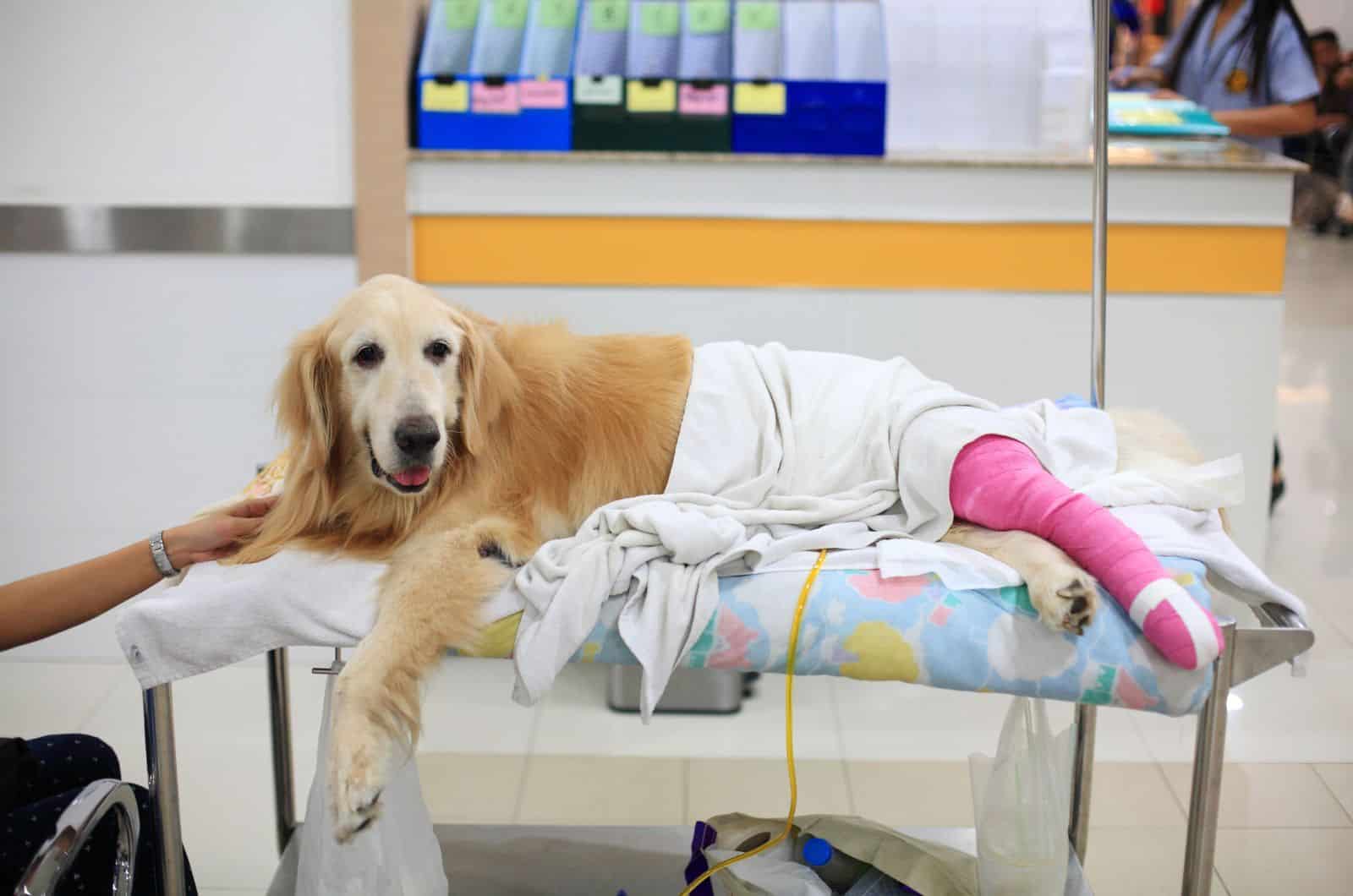We all know that dogs love to be active and play with other dogs and their owners. Well, some dog breeds like it more than others. But all in all, every dog needs and loves to have some fun running along.
What happens when a dog gets an injury that is quite severe? Nobody likes when their dog has any type of health issue, whether mild or severe. But there are some injuries that can determine the quality of life of a dog.
A torn ACL is one of those injuries. When a dog has any kind of difficulty with its legs, it can cause many problems. You may even need to put a dog down if you see that their lives have dramatically worsened.
ACL injury is a serious thing, and it can lead to your dog being put down. This is really sad but unfortunately, it is the reality, so we want to prepare you for it.
When to put a dog down with a torn ACL is the question we will be answering in this article. We will be giving you as much information as we could collect connected to this problem and every single detail that may help you and your dog go through this journey.
What Is A Torn ACL When It Comes To Dogs?
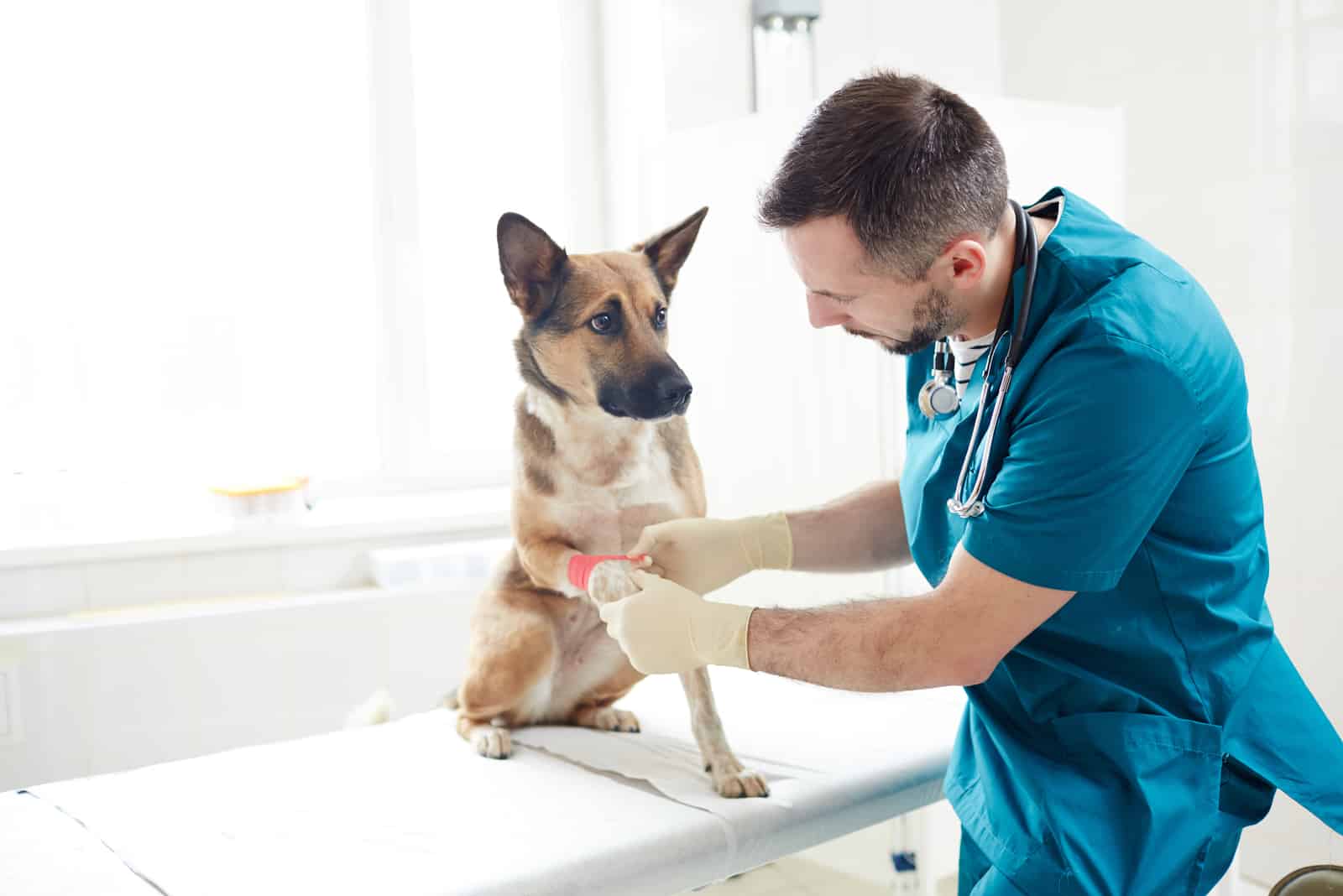
Before we start with symptoms and potential factors that show that your dog might not be able to handle this injury, we need to see what in fact is an ACL and what a torn ACL means.
ACL is short for Anterior Cruciate Ligament and it is connected to the dog’s hind legs. When it comes to canines the term cranial cruciate ligament or a CCL is more appropriate. But people tend to remember the term ACL easier so this is the term that we will be using.
When talking about a dog’s hind legs, they include the dog’s knees and ACL. The ACL is located between the tibia (bottom bone) and femur (top bone) in the hind legs of a dog.
The ACL is a ligament that is located in the dog’s knee, and it helps with the movement of the dog’s leg, or in other words, it helps the dog to move around, aka with walking and running.
ACLs are always under some type of pressure. This pressure will be bigger if the dog is running, and smaller if the dog is slowly walking around.
You probably noticed with puppies that they have a moment where they are running in one direction and all of a sudden change that direction. This is something that is really risky because this way they can easily tear the ACL.
Dogs that are obese or that are bred in a bad way by unreputable breeders can have problems with their ACL.
Dogs that end up having an ACL injury will experience a lot of pain. The dog probably won’t be able to walk properly, and in severe cases, it will not be able to move at all. The injury comes suddenly, and you will be able to see your dog react very soon after the injury occurs.
This is when you need to react quickly. A vet appointment needs to be booked as soon as possible. The dangerous thing about an ACL being torn or injured is that if left untreated, it can affect the spine.
To be more precise, it can cause spinal curvature.
ACL surgery is always necessary but there are some other options when it comes to treatment that can be considered as well.
There can be a case that the dog will not get better even after surgery and all other treatment options. This is the time that you need to start considering the unimaginable. This might be one of the most difficult decisions that you need to make but it is for sure the most humane one.
What Are The Signs Of A Torn ACL In Dogs?
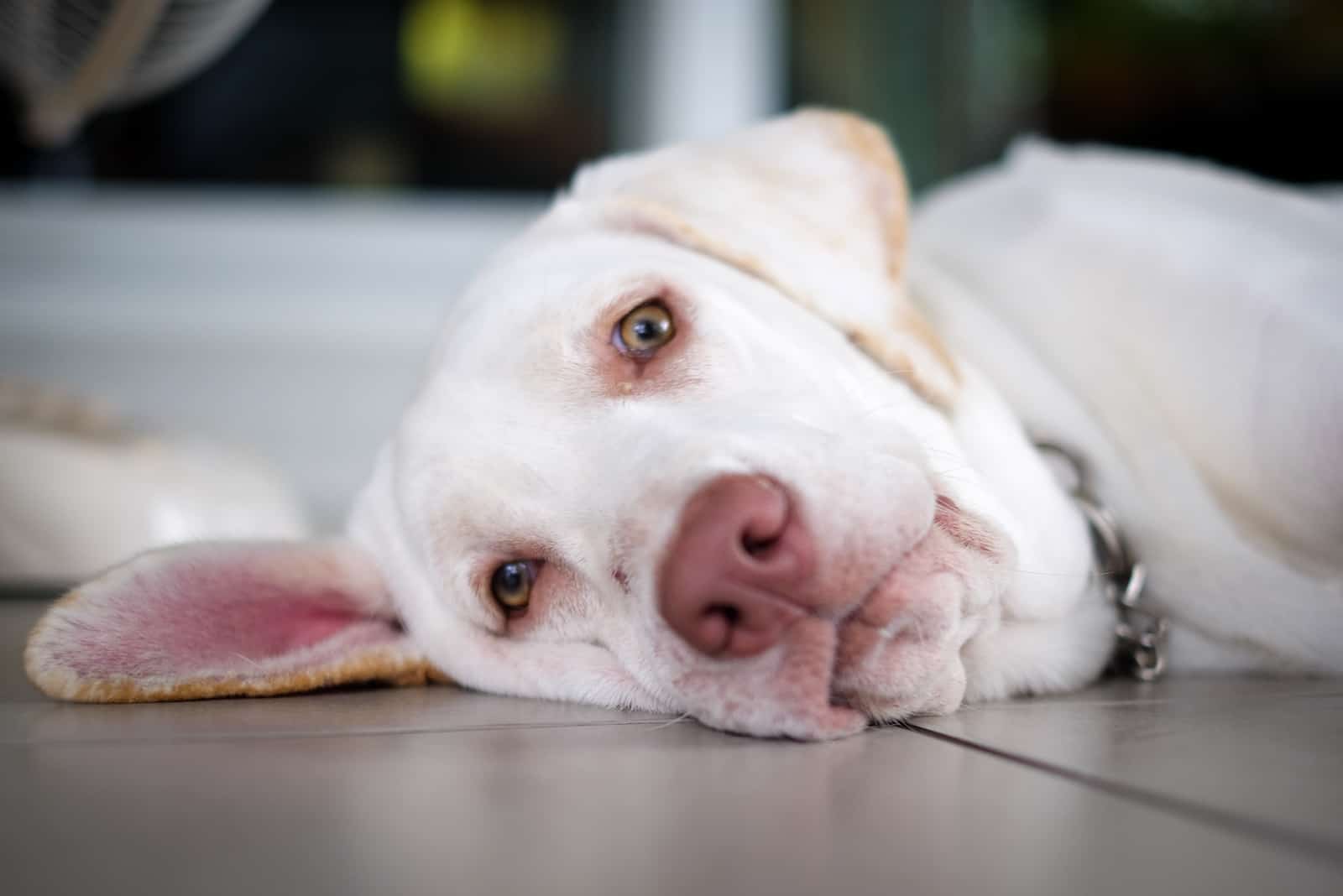
These types of injuries can be quite tricky to detect. Some of the symptoms are also the symptoms of similar injuries that are much less serious than a torn ACL. It is up to us to determine whether or not the dog looks like it is in too much pain.
Our advice is to always take your dog to the vet even when things might not look that serious. You never know what can really be happening with your pooch because it cannot communicate it.
Here are some of the signs of a torn ACL that are pretty common, and they might help you realize that your dog has this injury.
– In the moment of the injury your dog will cry or yelp because of the pain
– They will refuse to exercise
– They will have difficulties with walking and standing
– They might drag their legs or just the injured leg
– They will refuse to put any weight on the injured leg and start limping (lameness)
– They might sit in a strange position
– You will be able to hear some clicking in the limb when the dog is moving
– The knee joint might get thicker
– They might start protecting the limb, meaning that they won’t let you near it
– They might show some strange behavior (sleeping under your bed, being attached to you, etc)
A lot of these symptoms will occur right after the injury has occurred. Other symptoms may happen after some time. This also depends on whether the ACL is torn completely or if it is a minor tear.
Whatever the case might be, if you notice any of these with your dog take them to the vet. It can be some mild injury, but it can also be an indicator of a torn ACL.
When To Put A Dog Down With A Torn ACL? How To Know If It Is The Right Time?
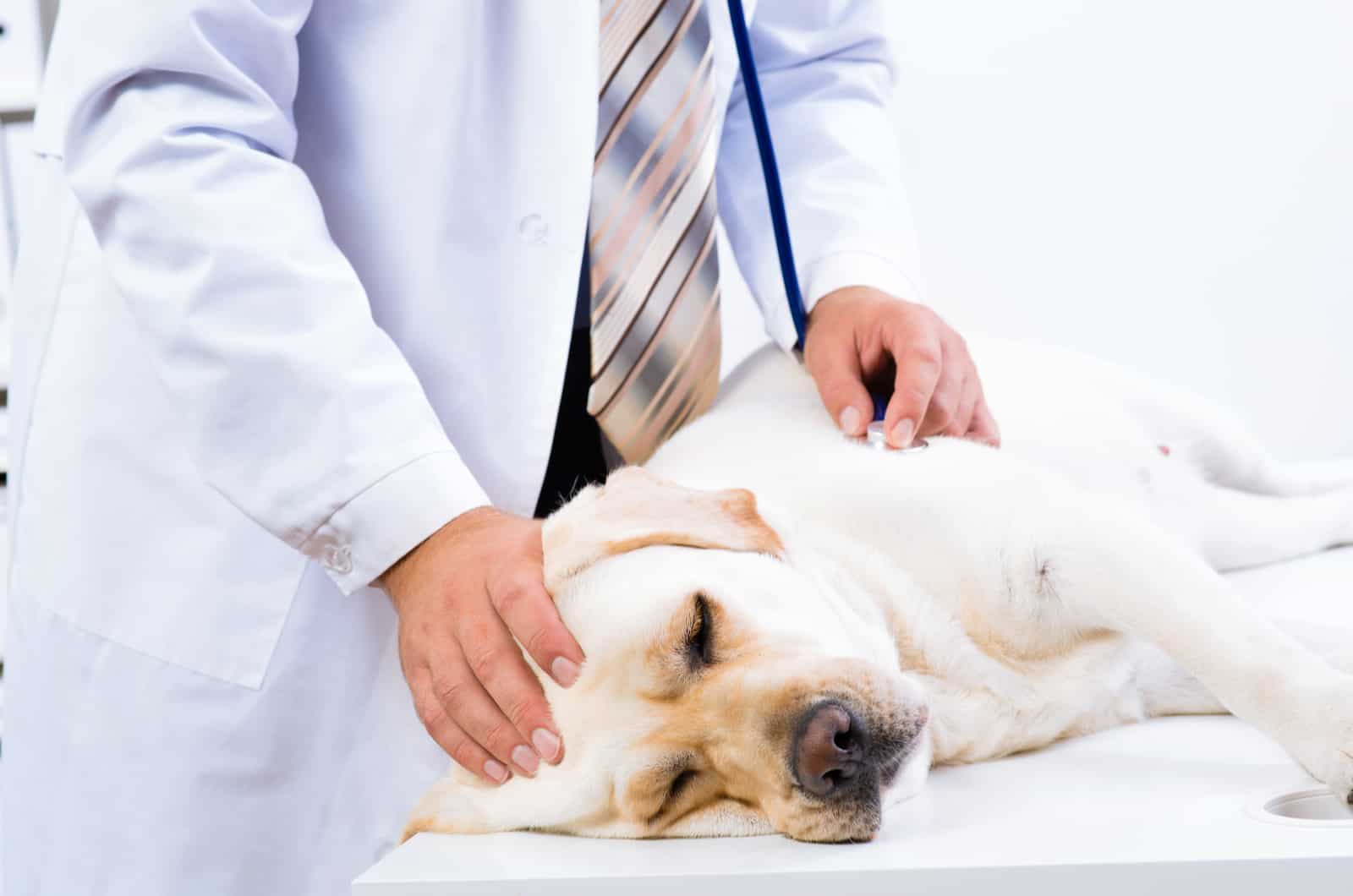
Whether or not euthanasia is the right thing to do, it is never an easy decision to make. All of us dog owners want our dogs to be with us for as long as possible. But there is also another aspect of this, and that is your dog living a happy and comfortable life.
Sometimes the dog might be truly in discomfort and the best option may be to put your dog down. It will for sure break your heart because you will always have the thoughts of ˝Was it truly the best option?˝ and ˝Was there anything else that I didn’t try that could have helped my dog?˝
To be sure that you have done everything, the best thing to do is to have a serious conversation with your vet. But here are some of the things that you need to take into consideration and that you need to monitor at home.
1. Dogs Age
This is a big factor when it comes to any health issue that a dog might have, especially the more serious ones. When the dog is older it cannot handle some of the procedures that need to be done in order to make him or her better.
Sometimes, because of their age, the procedures aren’t really an option because there is a lower rate of them surviving it.
Even if the old dog survives the surgery, it might not have the ability to heal properly because of the state of its body. The recovery from any injury and procedure is not easy, even for younger dogs.
But when you think about it, younger dogs have a lot more time to heal and enjoy their life after recovery. If your dog is already at the age that they might have a year to a couple of years to live, putting them through the recovery process might not be the best option.
Your old dog that is injured may be attached to you all of a sudden. This is just their way of getting comfort from you so do not be surprised.
This is something that you should speak with your vet about, what the best option is for your senior dog.
2. Quality Of Life

This is one of the main factors that you need to consider. Giving your dog the best quality of life is a priority for every dog owner. This is something that your vet can help you with, but it is also something that you need to monitor and figure out by yourself.
Some dogs will not be able to ever fully recover from this type of injury, even if surgery or any type of treatment is performed. This of course is a big gamble when it comes to young and healthy dogs.
With them, it is difficult to predict if the surgery will only improve their quality of life by little, or if they will fully recover. The only way to find out is to perform the surgery and see how your dog handles it and how it recovers.
When it comes to dogs that are old or may have other health issues there might be a way to tell if surgery is even an option. This type of serious injury can take a toll on a dog’s quality of life and there might not be an option to make it better.
You need to monitor if your dog is for example not sleeping at all, wants to be alone, always crying in pain, and having difficulties eating, walking, and being active. All of these things are big red flags, and you need to take them seriously.
If any of these or even a combination of these occurs with your dog, you need to know that they are struggling more than they are enjoying their life, and this might be the time to let them go.
3. The Health Of Your Dog
If your dog already has some health difficulties, something like a torn ACL can make them even worse. The recovery process and the success rate of the surgery or any type of treatment will most likely be compromised with sick dogs.
Hip problems, joint issues, some sort of dysplasia, or any bone-related difficulty are not the only health issues that your dog can have that will make the recovery from a torn ACL more difficult. Your dog might have cancer or even diabetes and have a lot of issues because its immune system is already compromised.
The surgery can even make things even worse with the existing problem.
RELATED: 7 Signs Your Dog With Diabetes Is Dying
4. Your Dogs Surgery Success Rate
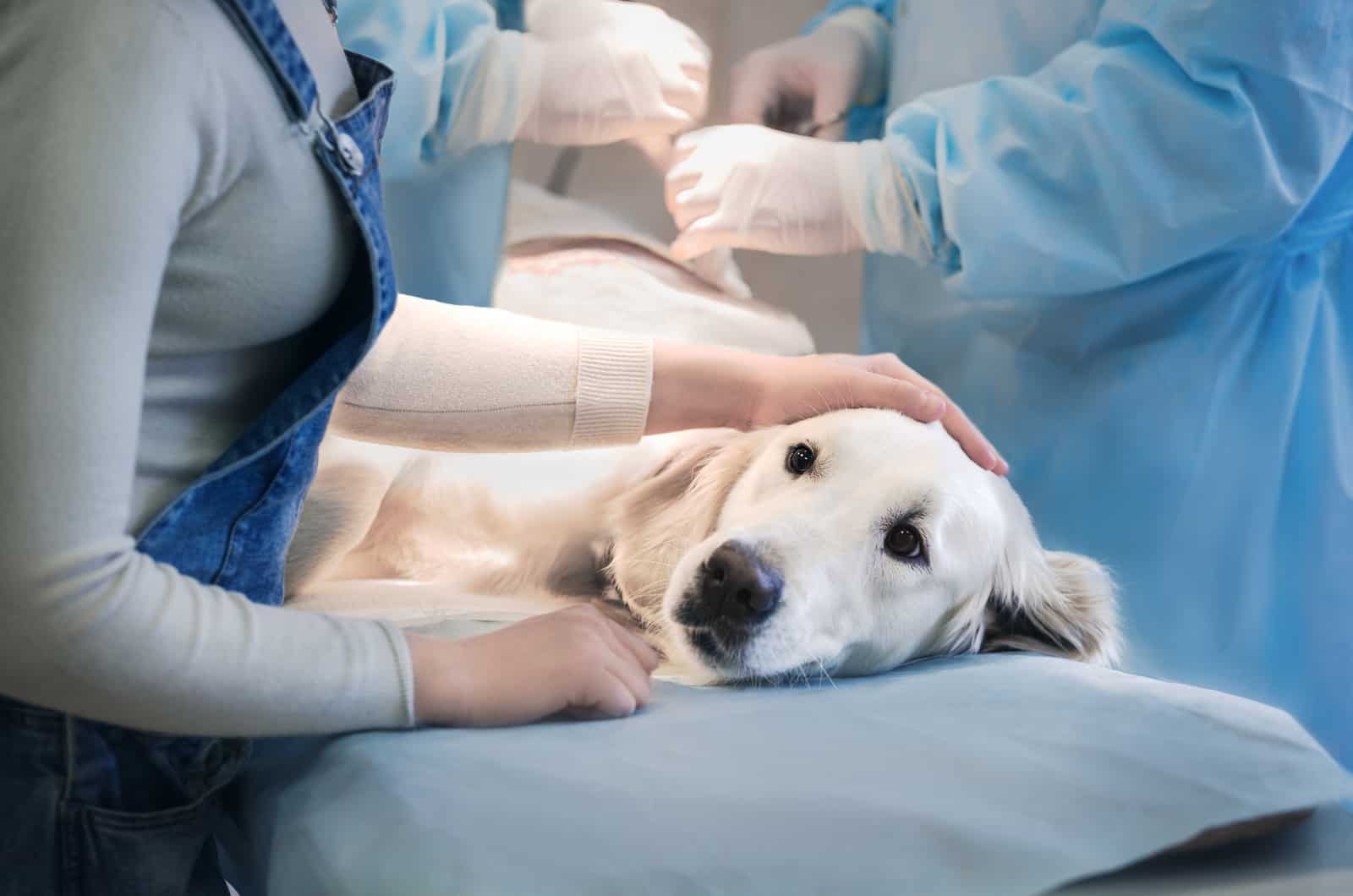
This is something that you need to take seriously. It is not something that you can do by yourself so you will need a lot of help from the vet.
There are a lot of things that need to be taken into consideration. You and your vet will gather all the information after every testing and your home observation, and the vet will then be able to decide whether or not your pooch will be able to go through the surgery or not.
This does not only mean that there might be a big risk of your dog passing on the table during the surgery. It also means whether or not there will be any improvement after the surgery is done and how your dog might take the recovery process.
If the vet is able to see that your dog might not have any improvement after the surgery, it won’t be performed. The point of the surgery is to heal your dog from the injury and provide them with a normal life.
If the surgery cannot provide that, there is no point in going through with it.
5. The Constant Pain
When the injury happens, your dog will for sure be in a lot of pain at that moment, and maybe even for a long period of time. Depending on the severity of the injury the dog might stay in pain for a long time, or the pain may gradually go away.
It can sometimes be difficult to detect if the dog is in pain that is not that endurable. If they have a small sprain, they might show it from time to time that they are uncomfortable.
But when a dog is in severe pain you will be able to notice. They will probably cry a lot and won’t be able to make themselves comfortable. They will get tired easily and might even get tired of barking.
When this is the case, usually the vets suggest immediate surgery. But there is a catch. Sometimes even the surgery may not be able to fix the pain. The injury is probably worse than the vets predicted.
If your dog is still in a lot of pain even after the surgery, the most humane thing that you can do is to euthanize your pooch.
6. Size
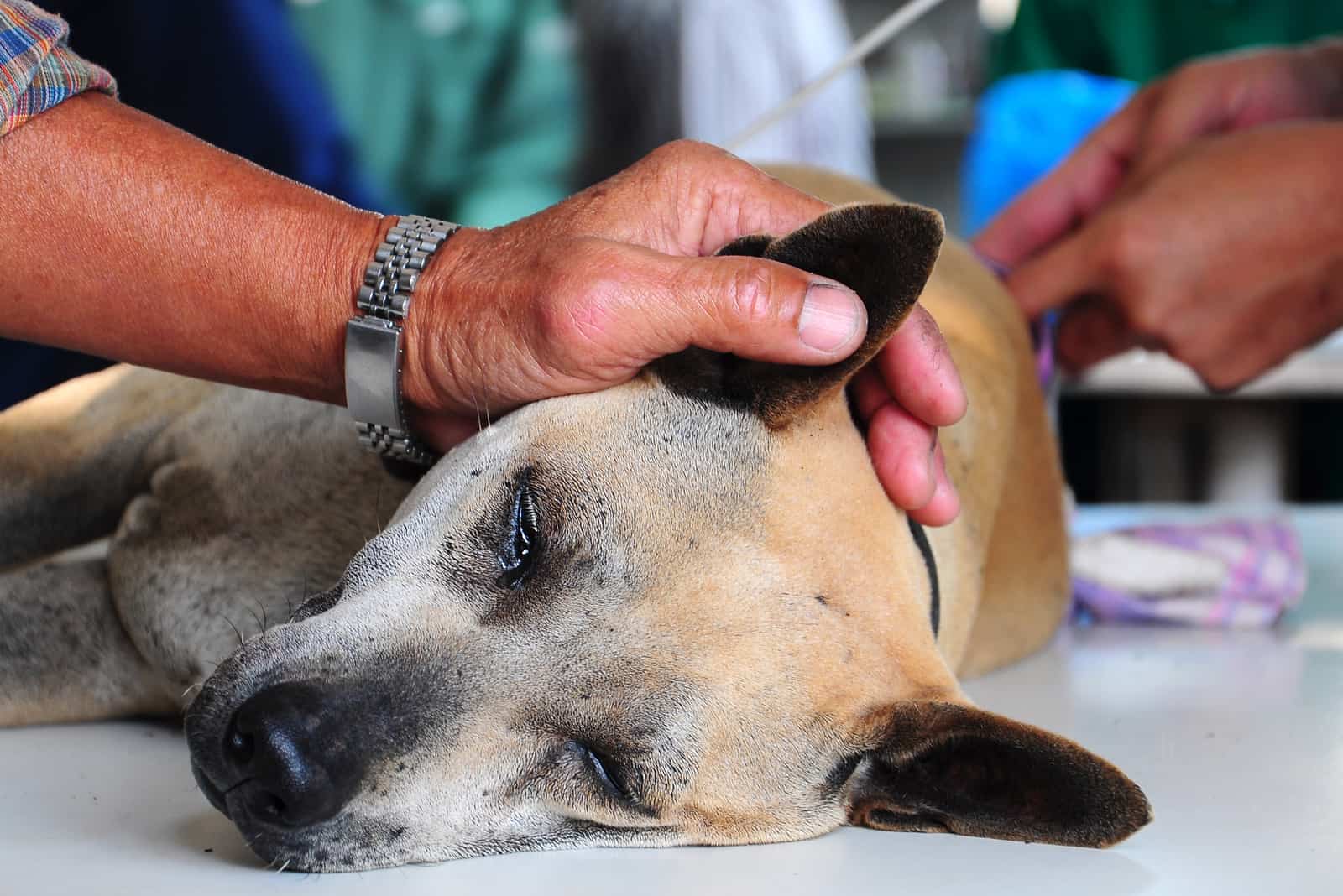
This might be strange for some people but when it comes to this type of injury, the size of the dog plays a big role in the recovery process. Larger dogs have a much bigger issue with recovering from this injury.
The bigger the dog the bigger the problems. Large dogs will have more pressure put on their knee, or whatever part of the leg that is injured.
Smaller dog’s ACLs will have less pressure put on them so there might be a bigger chance of recovering, this, of course, depends on the severity of the injury.
If you see your larger dog struggling, especially if they already have some other bone-related disorder, you might need to take the heartbreaking step of euthanizing your pooch.
7. Dog Breed
We are all aware that certain dog breeds will have certain health issues that they are more prone to than the other breeds. This is also the case with the ACL getting torn.
Why is being prone to this injury dangerous? Well, if your dog already had this problem and successfully recovered from it, there is a big chance for it to get it again. The second time can be much more difficult to recover from.
There is even a chance that the second time around might be your dog’s last time. We know that this sounds harsh and difficult to hear, but not a lot of dogs have successfully recovered from this injury for the second time.
Here are some of the breeds that are more susceptible to getting a torn ACL.
– German Shepherd
– Rottweiler
– Saint Bernard
– Golden Retriever
– Bichon Frise
– Labrador Retriever
– Newfoundland
– American Staffordshire Terrier
– Bull Mastiff
– Great Dane
This does not mean that if you have any of these breeds your dog will for sure get this injury. Knowing that your dog is on this list may help you to be more careful and observant.
8. Cost Of The Surgery
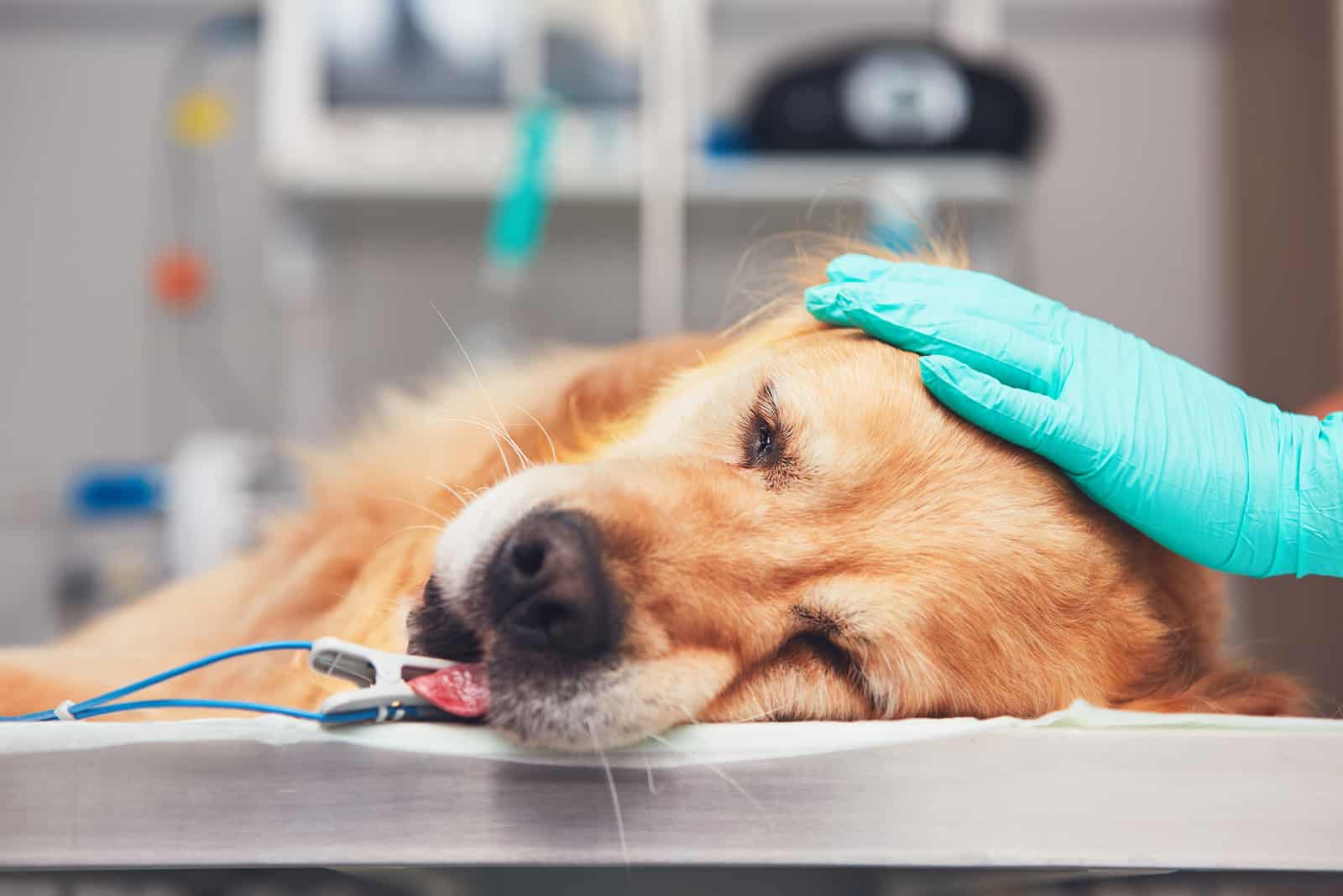
This is one of the biggest factors as to why some people need to euthanize their dogs. These surgeries are really expensive, so we understand that not a lot of people can afford them.
This helpless feeling is really overwhelming and can haunt the dog owner for a long time. There are some other treatment options that can help your dog, but when it comes to severe cases, surgery might be the only option.
This will be a difficult decision to make but you are doing the best thing for your dog and that is not letting them suffer. We want to tell you straight away that you are not the one to blame and that we are sure that you have tried everything in your power to make your dog get better.
9. The Dog Not Wanting To Walk
This is a big sign that can show you that your dog is not doing well. If your dog refuses to walk a long time after the injury has occurred, or even worse, after the surgery, you might need to euthanize your pooch.
This means that your dog is in a lot of discomfort and pain. Not wanting to walk can bring a lot more issues that will make the recovery process even harder.
They might do some things that you can get mad at in normal circumstances, like your dog pooping in the house, but stay calm because you know that they are probably in a lot of pain.
10. Refusing To Eat
If your dog is refusing to eat in general or if it cannot eat by itself, it is for sure a bad sign. With every health issue, your dog losing appetite is a sign that they are not doing that good.
There is some food that you can give a sick dog with no appetite but you need to know that not even that food may help the dog gain its appetite back.
You need to have a serious conversation with your vet if you see your dog is refusing to eat, especially if it lasts for a long time.
5 Treatment Options For A Torn ACL In Dogs
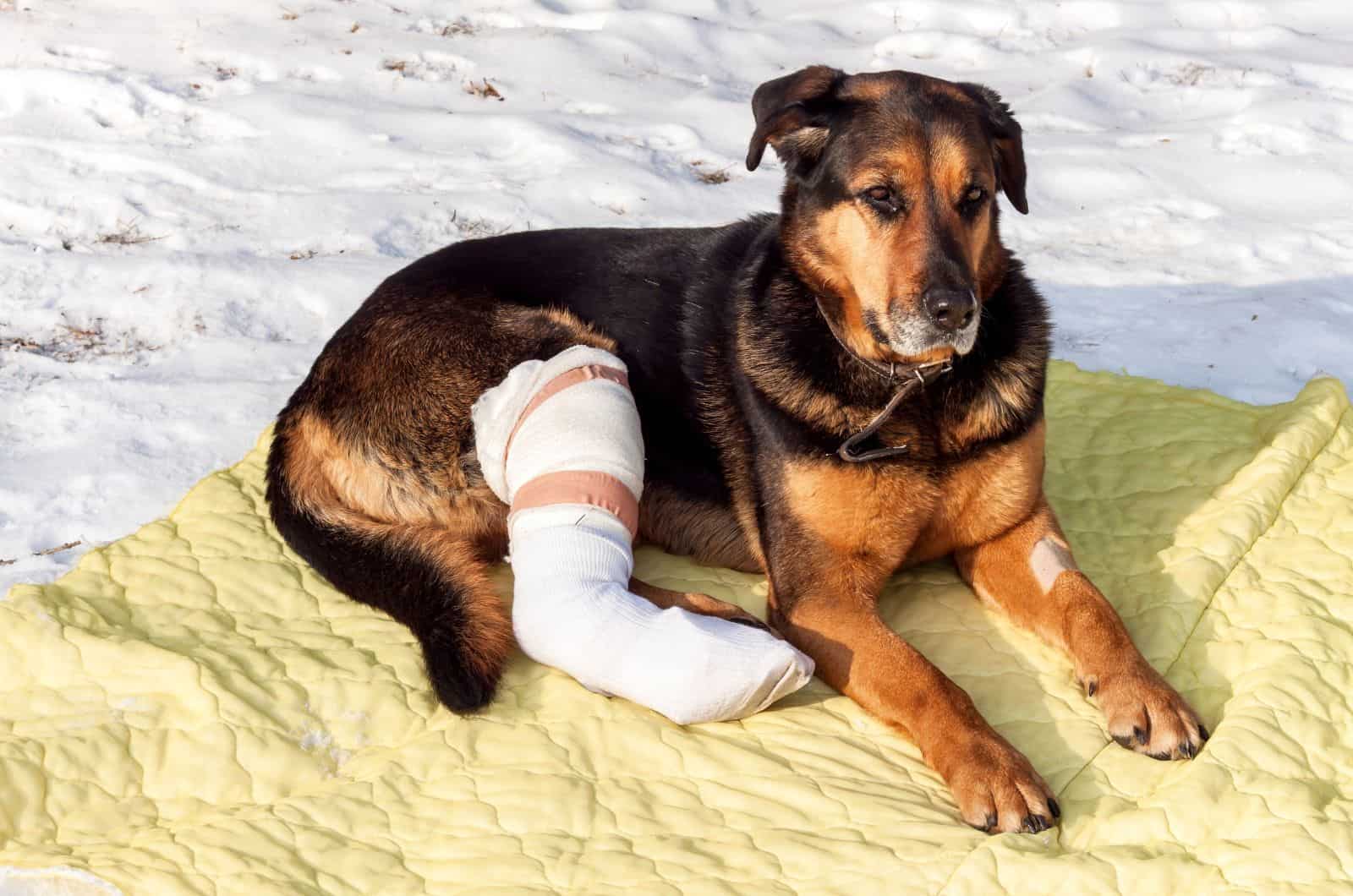
We have mentioned quite a few times that surgery is usually the best option for your dog that has a torn ACL. Just like with any other illness or injury, there are always a couple of options that you can try before surgery.
All of these depend on the severity of the injury. Some treatment options might be effective for one dog but not that helpful for another one. The severity of the injury is not the only factor that can determine the success rate of these treatment options.
Don’t feel disappointed if they turn out to not work as effectively as surgery would.
Here are some treatment options that can be effective for an ACL tear.
1. Prolotherapy
Prolotherapy is a technical procedure that includes an irritant being injected directly into the ligament. This treatment is used mostly on larger dogs that have an ACL tear that is not on a level for the need of surgery.
This is also something that is done before the surgery if the dog owner is not quite sure if they are for the surgery option.
The irritants that are being injected into the dog’s limb work by making the dog’s body create more healing agents that will help recover the injury. This will help your dog recover faster and they may end up not needing the surgery after all.
If this treatment does not work, there is a big chance that your pooch will need surgery. This treatment is done by a specialist because it needs to be done precisely. If it is not done right, it can cause your dog even more pain than it originally had.
2. Limiting The Dogs Movement
This type of treatment is only for cases that are not severe, or in other words if your dog has a minor strain or tear. The vet will suggest that the healing process goes by limiting the movement of your dog.
This way the strain or tear will not get bigger and more dangerous. The vet will also combine this with some pain pills and some physical therapy. It will help your dog to be as strong as possible so it will heal much quicker.
The important thing is that the injury does not happen again and that it does not leave any long-term symptoms.
3. Pain Medications

Pain medication will be given to your dog whether or not you decide on surgery. Tearing the ACL is very painful for the dog so the medication will help it endure it much easier.
This is in the beginning stages of the tear. You will need to decide in a short period of time whether you would like the surgery or not.
In mild cases, pain medication and the limitation of movement will be enough. But the severe cases will need more serious treatment options and they are always combined with pain medications.
Pain management is the most important thing when it comes to a torn ACL. When the dog is feeling a lot of pain constantly it will most likely heal slower. The medication can also be given for anti-inflammatory purposes.
4. Leg Bracing
Leg bracing or knee braces are used when the pet owner is still thinking about the surgery option. It is made especially for ACL injuries or in other words knee injuries.
This leg bracing will not allow any part of the ACL and around it to move, so it can heal properly and not get injured even more. The dog will be able to move the other legs perfectly normally so they can move around with not a lot of disturbances.
5. Surgery
This is usually the most effective treatment for dogs that have torn ACLs. There are a couple of surgeries that can be performed to make sure that your dog will recover.
The type of surgery depends on the severity of the injury and even the size of the dog.
Here are some types of surgery that can be performed depending on the dog’s situation
– Tibial Tuberosity Advancement (TTA). This surgical procedure is for large or medium dogs. It includes making a small incision on the tibial tuberosity and then moving the bone to make space for it to align better with the patellar ligament. The bone is held in place by screws and plates. The healing process usually lasts around 8 to 12 weeks.
– Tibial Plateau Leveling Osteotomy (TPLO). This procedure is reserved for large dogs, and it is the most common one. The damaged parts of the ligaments and meniscus will be removed, and a cut on the tibia will be made to rotate the tibial plateau, which will then be secured with screws and plates. The recovery process will last for 8 to 12 weeks.
– Lateral Suture Repair. In this type of surgery, the vet will use the suture material to repair the tear in the ACL and this material will be placed on the outside of the knee cap. The production of scar tissue in the area is the most important thing after this surgery. It is performed on small dogs and even cats.
How Much Does An ACL Surgery Cost?
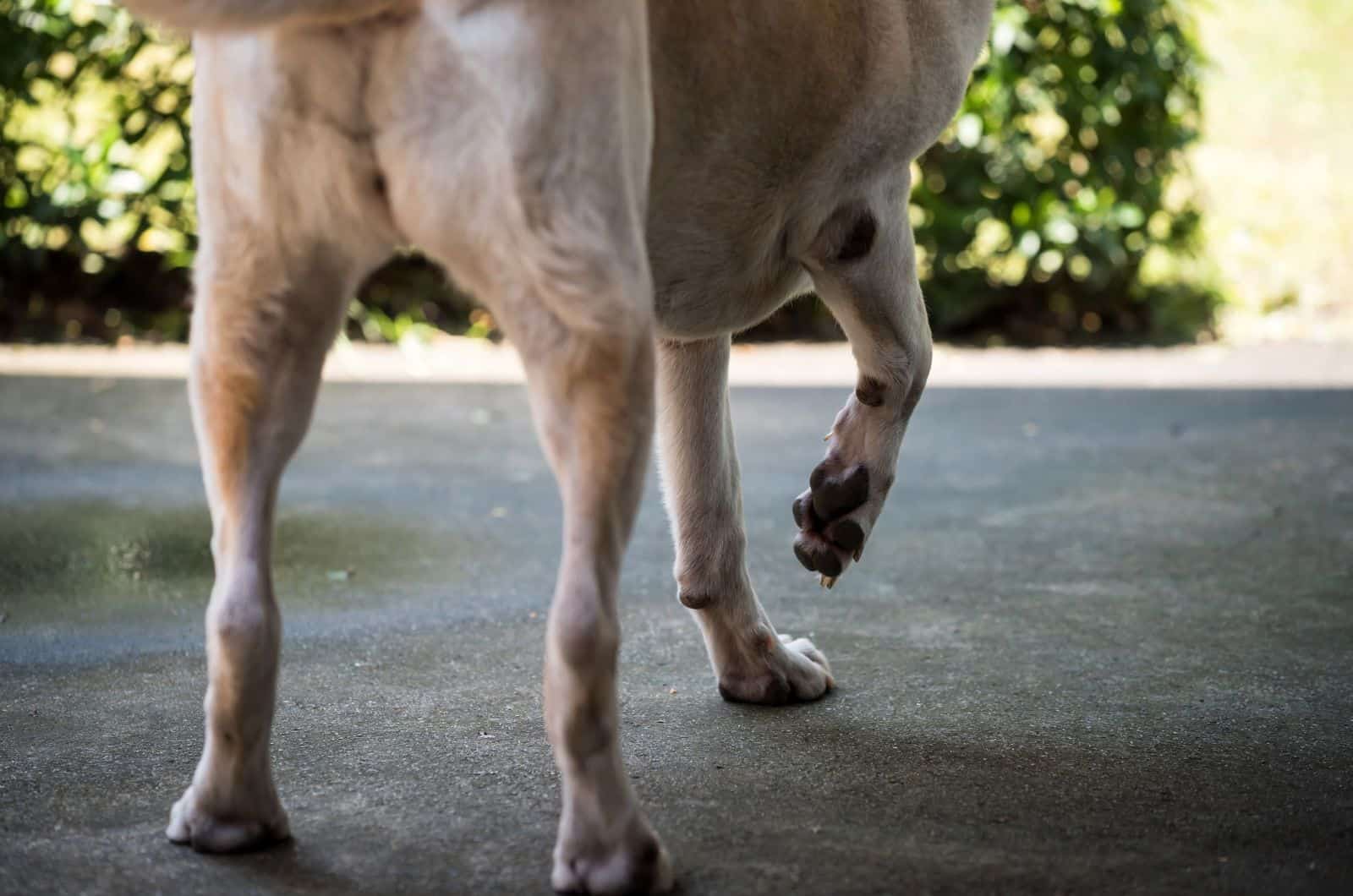
You need to know that this type of surgery is quite expensive. The cost can depend on many factors but mostly it is about the severity of the injury and the overall health condition of your dog.
The Cost of ACL surgery can go anywhere from $650 up to $6,000. Generally, it is around $2,000 to $3,000 for each knee cap.
Don’t be surprised if the cost goes up to $10,000. This is usually for cases where the dog is already really sick but there is a chance that they might get through the surgery and recover from the torn ACL.
The better the vet clinic the higher the cost.
This is one of the reasons that people decide on putting their dogs down. It is really understandable because as you can see the bills are high and not a lot of people can afford to pay them back.
Dog ACL Surgery Success Rate
When it comes to the success rate of this type of surgery you need to know that it can depend on a lot of things, some being the age of your dog, the overall health, and the condition of the injury.
When it comes to young dogs that have no other health issues the success rate is around 85% to 90%.
Unfortunately, there will be some cases in which the vet will not approve the surgery to be done. This is usually in cases when the dog is really sick or old. The percentage of the dog healing without surgery, especially in the more difficult cases, is pretty low.
Can A Dog Recover From Torn ACL Without Surgery?
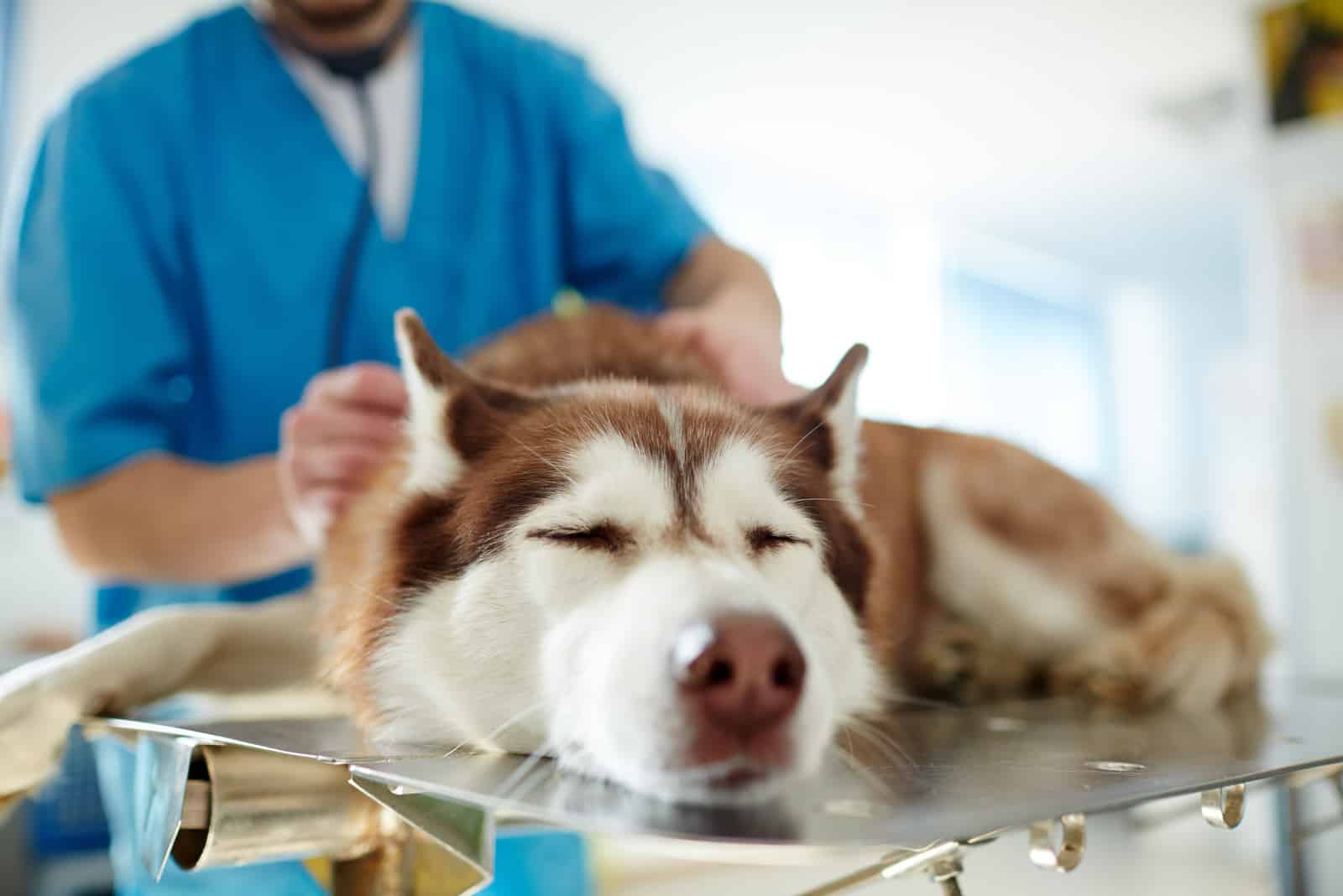
We have mentioned some treatment options that do not include surgery. How effective they will be will depend on many factors. Generally speaking, dogs that are younger will have a higher chance of getting better without the surgery.
But even with young dogs, if the injury is really bad, there might be more difficulties in the healing process without surgery.
This also depends on the state of your dog. If your dog is refusing to eat and move around, the healing process probably won’t be able to go smoothly, and this is when the vet will decide on surgery.
There is also a big question of can a dog live with a torn ACL. The short answer is yes, but the long answer will depend on the state of the dog. Even the dogs that have a severe case can live with a torn ACL but they will live an uncomfortable life filled with pain.
When it comes to this injury it is not about your dog surviving it but it is about your dog healing from it. Every dog can survive it but not live a comfortable life. Deciding on whether your dog is able to heal from it is the most difficult part of the injury.
How To Take Care Of The Dog That Has A Torn ACL?
Taking care of a sick dog or a dog that has just gone through surgery is never easy. It is overwhelming for both you and the dog. There are some things that you can do to make your pet’s life much easier.
Some will not take a lot of time and energy while others will. Seeing your dog in discomfort is never easy so the recovery time will be stressful for the owner until the dog heals completely.
Here are some things that you can do to help your dog.
1. Make Sure That They Rest For 6 Weeks

This will be easier when the dog is in the beginning stages of the healing process. They will not have the energy, or will still even be in some pain, so they will not have the motivation to move around.
Your dog should be lying down for the majority of the time, so the injury heals completely and there is less of a chance for the injury to get worse.
Try to make sure that your dog is lying in a comfortable pose and that they do not need to jump on any higher surfaces, like a couch for example.
When your dog needs to go out to do its business, carry them around and let them down only when they are peeing or pooping, then carry them back to the house again.
When the dog gets some energy, it will most likely like to move around a bit more, so this is the part when it becomes a bit more difficult for the owner. You will need to make sure that they do not move too much and for too long within those 6 weeks.
2. Give Them A Comfortable Bed
Comfort is the most important thing for your dog during the healing process. They need to have a bed that is big enough for them to lie in whatever position is best for them.
Some additional things that you can do to make the bad feel cozier are to add their favorite toys and even some pillows.
The bed should be placed somewhere where the family spends the majority of the time and that is close to the doors, so it is easier for the dog to go outside to the bathroom, or for you to carry it out easier.
Dog food and water should be placed near the bed so the dog does not have to move a lot to eat and drink some water.
3. Providing Them With Ramps
When your dog gets some energy, it will most likely want to jump on the couch or the bed. This can be extremely dangerous for the wound that is healing.
But your dog probably won’t leave your side at this point so climbing on your bed is very appealing to them.
Make sure that you get ramps that will make it easier for your dog to get to the higher surfaces. These are also good if you need to get your dog to the car.
There are many types of ramps that you can find either online or in pet stores.
4. Remove Them From Slippery Floors
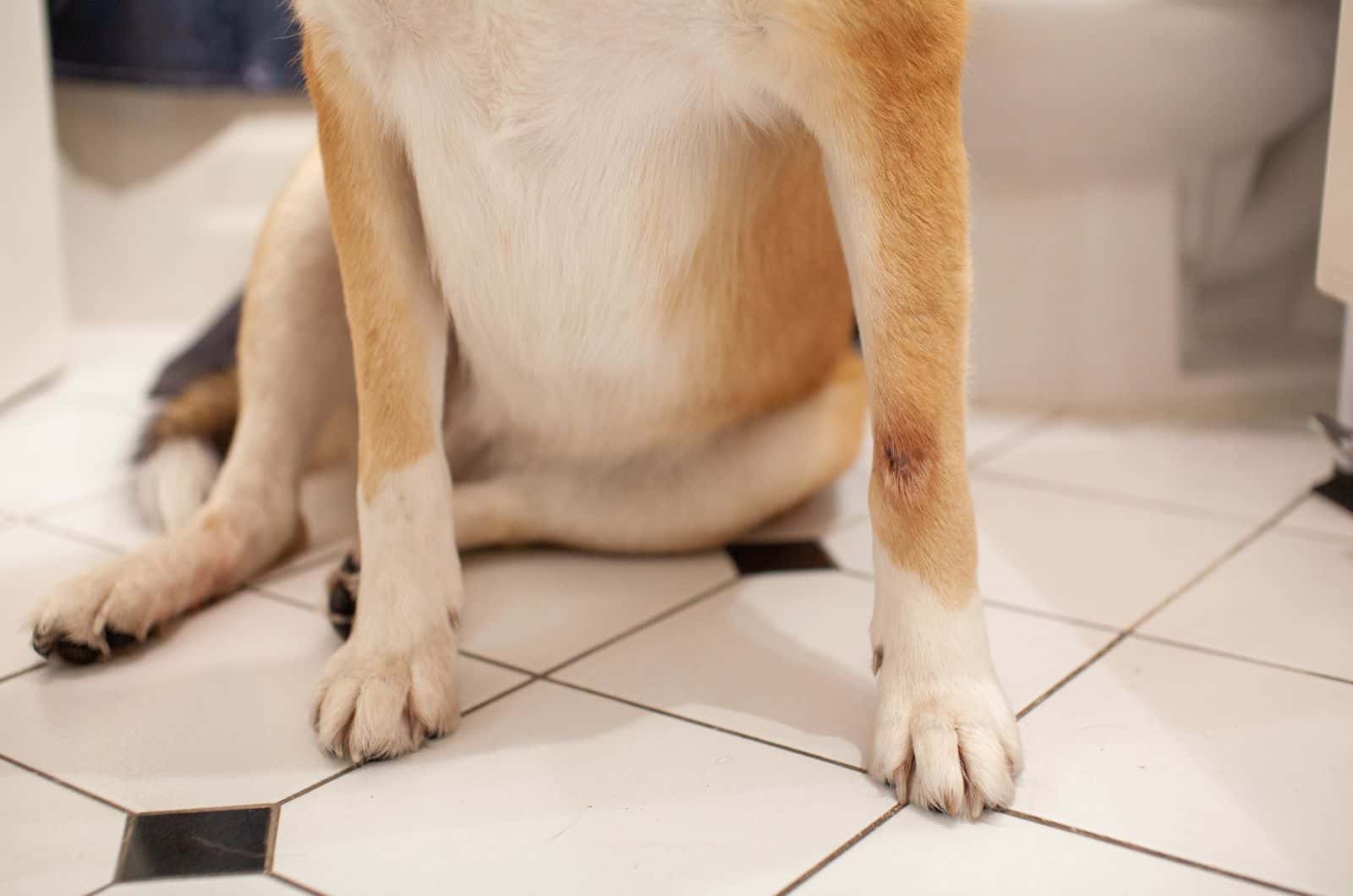
Dogs that are healing from a torn ACL need to walk on floors that have some sort of texture, like a rug. If they walk on slippery surfaces there is a big chance of them getting injured again, especially if they are still in the healing stage which makes them walk only on three feet.
If you have any surfaces in your home that are slippery, try putting either a rug down or just try to block that part of the home so your dog will not be able to have access.
Don’t put down blankets or towels on the part of the floor that is slippery because it will not do too much. The soft materials will still be slippery for the dog, if not even more slippery than the floor itself.
5. Stair Gates
This is a great tool that you can use to stop your dog from roaming around the house, especially the stares if you have multiple floors. You can use children’s gates; they do not need to be specifically made for dogs.
The main thing is that it keeps them from either leaving the room or walking up and down the stairs.
If you have a big dog, make sure that the gate is high enough so they cannot jump over it. If the gate is not high enough, they might try to jump it over and injure themselves even more.
6. Proper Diet
In the period when your dog will not be moving a lot, you need to make sure that they eat a proper diet that will make them full and healthy but not make them gain weight.
Because of the lack of movement, the dog food that you have been giving your dog prior to the injury may make them gain weight and even make them obese.
Obesity may make the healing process 100 times more difficult, and it can make the injury even worse.
7. Short Walks After 6 Weeks
After the 6 weeks that you were supposed to keep your dog calm, you will need to reintroduce them to activity. Doing anything too severe in the beginning may make the injury reappear.
A 5-minute walk is enough for your dog to go to the bathroom and spread its legs a bit. Try to find a place that you know doesn’t have a lot of dogs going through so your dog will not get excited and want to run.
After some time, and when you see that they are getting more energized and comfortable to walk, make the walks longer.
To Sum It All Up

Your dog having any type of illness or injury is very upsetting. A torn ACL is an injury that needs to be taken seriously. Dog pain is never a joke, so you need to make sure that your dog is comfortable enough until you decide what is the best solution for this problem.
This injury is not fatal by itself, but it will make your dog live a quite catastrophic life. This is when the question of “When to put a dog down with torn ACL?” pops up.
We hope that this has helped you by giving you some possible factors that can determine if your dog is not getting better and if it is the right time to euthanize it.
We also hope that your pooch will have a speedy recovery and that, with or without surgery, it will have many many pleasant years to come.
Read Next:
• Vetmedin Killed My Dog, But The Truth Is Not That Simple
